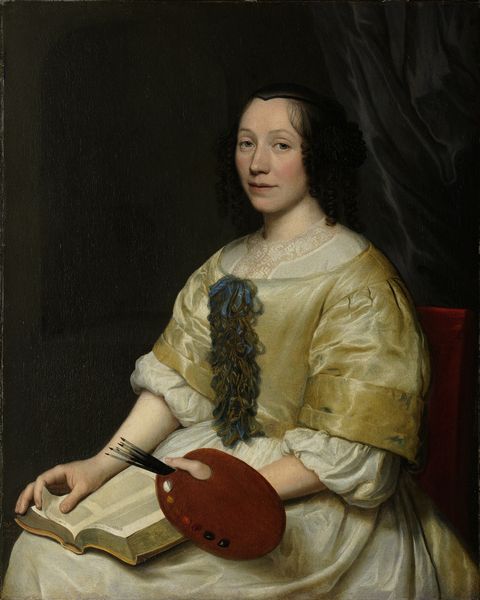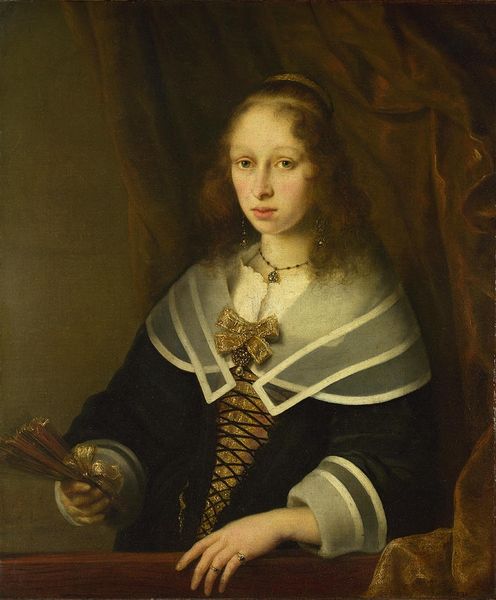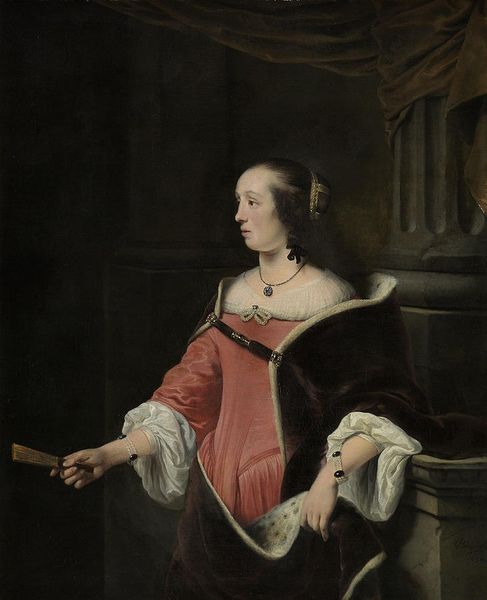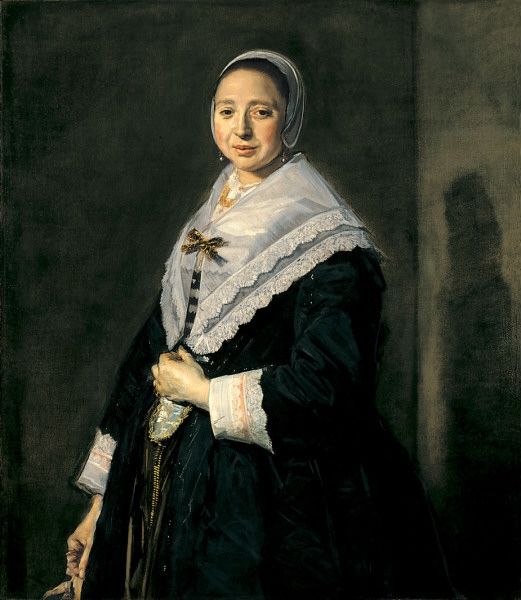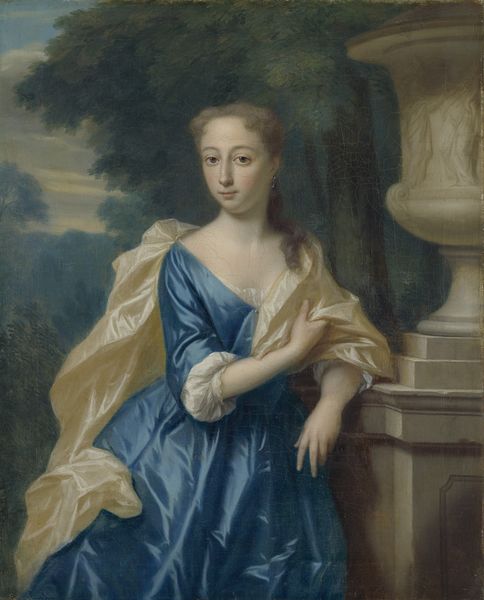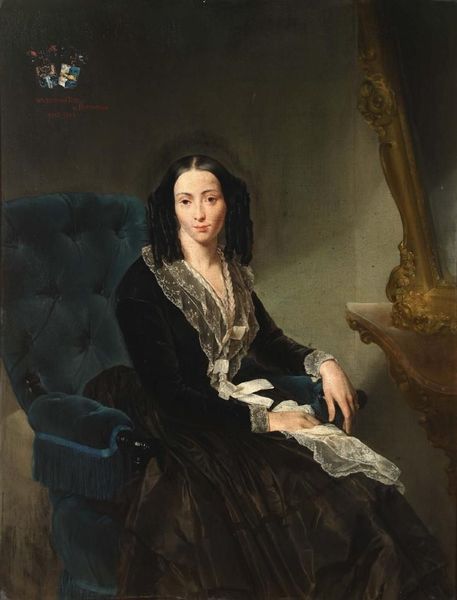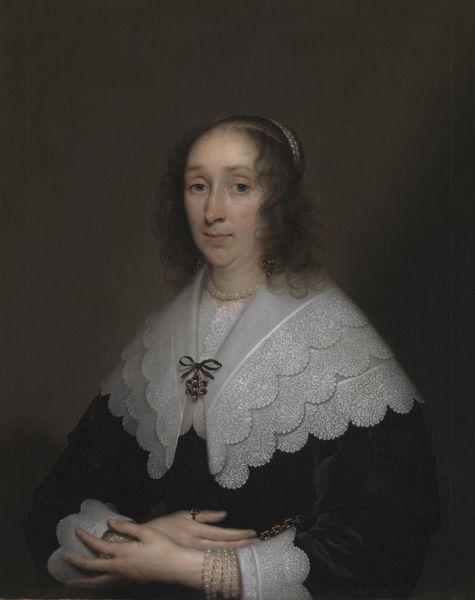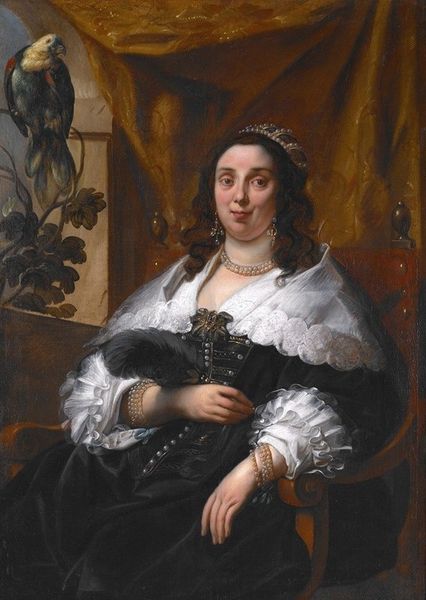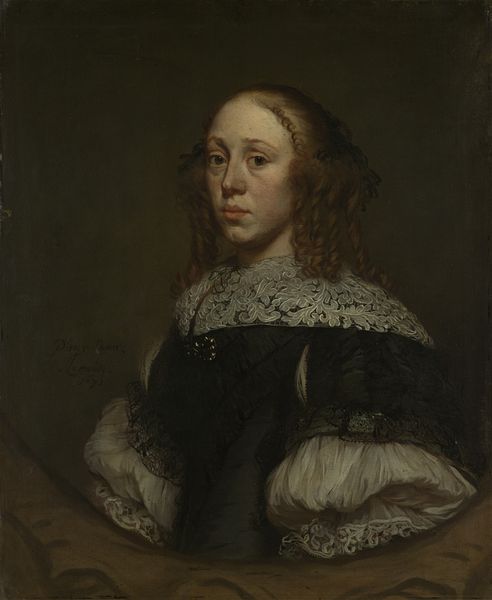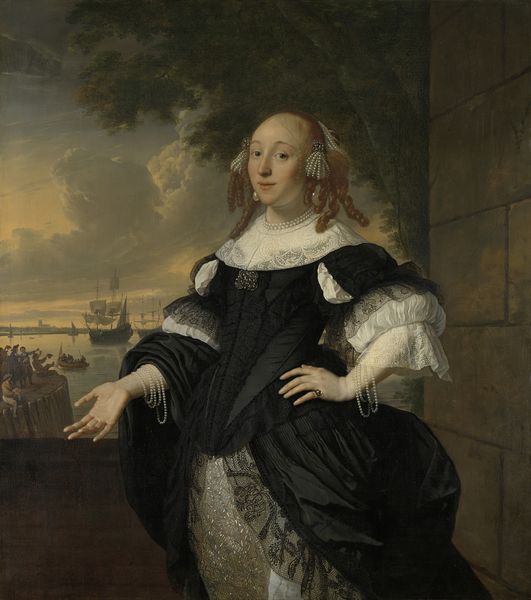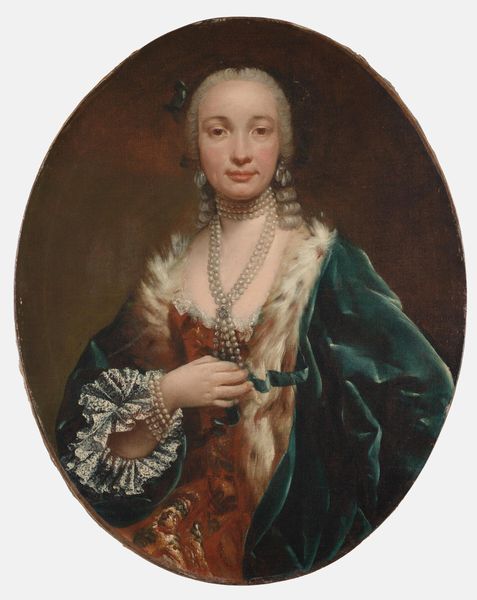
painting, oil-paint
#
portrait
#
baroque
#
dutch-golden-age
#
painting
#
oil-paint
#
genre-painting
#
history-painting
Dimensions: height 133 cm, width 106 cm
Copyright: Rijks Museum: Open Domain
Editor: So, this is Abraham van den Tempel's "Portrait of Catharina van der Voort," painted in 1667. The oil paint is luminous, especially on the fabrics. There's a somber mood about her though... what do you make of it? Curator: I see a careful construction of feminine identity within the confines of Dutch Golden Age societal expectations. Notice the tension: she holds a wilting flower, symbolizing the ephemeral nature of beauty and youth, and the stark contrast between her dark clothing and pale skin. How might this interplay reflect the limited agency afforded to women in that period? Editor: Agency? You mean because women’s roles were mostly confined to the domestic sphere? Curator: Precisely. And even within that sphere, their self-expression was mediated. Van den Tempel, commissioned by her husband perhaps, presents Catharina both as an individual, but also as a representation of status, virtue and wealth. The trappings of affluence are there. Editor: The pearls, the fabrics… I hadn’t thought about that tension. Was this type of tension common at the time? Curator: Think about it more broadly: these portraits reinforced hierarchies. By visually encoding societal expectations for women—piety, domesticity, submissiveness—they were complicit in upholding those very norms. It’s a potent reminder that art is rarely neutral; it actively shapes how we perceive ourselves and others. Editor: So by showing what was considered to be, women had a higher chance to live a peaceful life within marriage... Curator: Not just a peaceful life, a *successful* one. And thus, through this portrait, Catharina Van Der Voort immortalized herself in this pursuit. The flower suddenly doesn’t look as melancholy... Editor: Wow, that shifts my whole understanding! I thought it was just a pretty portrait, but there’s so much more layered into it! Curator: Exactly! That’s why situating art within its historical and social context is key. It reveals the complex dialogues happening beneath the surface.
Comments
rijksmuseum about 2 years ago
⋮
Catharina’s wealth radiates from this portrait. Van den Tempel positioned her before a balustrade, near a rosebush. Adorned with pearls and other costly jewels, she literally spreads her wealth before our eyes: the voluminous folds of her sumptuous gown extend across the full width of the painting, giving her an imposing air.
Join the conversation
Join millions of artists and users on Artera today and experience the ultimate creative platform.
